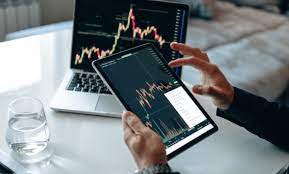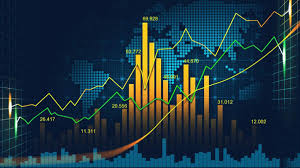High volatility is a prominent feature of the forex market, offering both challenges and opportunities for traders. Forex markets are known for their rapid price movements, often driven by economic data releases, geopolitical events, central bank policies, and other market forces. While volatility can increase the risk of trading, it also provides the potential for significant profits, especially for those who are able to identify and respond to market movements quickly. In this article, we will explore the concept of volatility in Forex, how traders can capitalize on it, and the strategies that can be employed to manage risk while taking advantage of price fluctuations.
Understanding High Volatility in Forex
Volatility refers to the degree of price movement within a particular period. In Forex, high volatility means that the price of a currency pair is moving rapidly and unpredictably. These fluctuations can occur within short timeframes and are often amplified by events such as news releases, geopolitical tensions, or economic reports. Traders who can navigate these swings effectively may find opportunities to make profits, but they must also be prepared for the risks that come with the territory.
Unlike other financial markets, the Forex market is the largest and most liquid market in the world, with an average daily trading volume exceeding $6 trillion. This immense liquidity, combined with the 24-hour nature of the market, means that currency prices can change significantly at any time. As a result, high volatility is not only common but can be a key factor in shaping trading strategies.
Opportunities Presented by High Volatility
Increased Profit Potential
High volatility creates the potential for larger price swings, which can lead to more substantial profits for traders who are able to anticipate and act on these movements. When currency pairs experience wide price fluctuations, there is an opportunity for traders to capture profits from both upward and downward movements. For example, a trader might profit from a sharp upward movement in a currency pair followed by a downward correction.
By leveraging technical analysis, traders can spot potential entry and exit points during periods of high volatility. The ability to capture even small price movements can be extremely profitable, especially when using leverage in the Forex market.
Frequent Trading Opportunities
Volatility increases the frequency of trading opportunities. With larger price swings, traders can capitalize on short-term market movements by executing trades more frequently. Day traders, in particular, benefit from volatile conditions, as they can make several trades throughout the day based on quick market moves.
Moreover, traders who use scalping or intraday trading strategies can profit from small but frequent price changes, as volatility allows them to enter and exit the market with greater precision.
Diverse Trading Strategies
High volatility opens the door to various trading strategies that are designed to take advantage of large price swings. Momentum trading, for example, involves identifying and riding the wave of price movements in the direction of the trend. Another strategy, breakout trading, focuses on entering positions when the price breaks through key support or resistance levels during volatile periods.
For traders who are willing to take on more risk, high volatility can provide an exciting environment to experiment with different strategies and potentially generate significant returns.
Managing Risk in Volatile Markets
While high volatility offers opportunities, it also introduces the potential for significant losses. To capitalize on market movements without exposing themselves to undue risk, traders must employ effective risk management techniques.
Use Stop-Loss Orders
One of the most important tools for managing risk in volatile markets is the stop-loss order. A stop-loss automatically closes a position if the market moves against the trader by a specified amount. This helps prevent losses from escalating if the market turns unexpectedly. Traders should set stop-loss orders at levels that allow for normal market fluctuations while protecting themselves from larger adverse moves.
Position Sizing
Managing position size is crucial when trading in volatile conditions. Traders should avoid overleveraging their positions, as even small price changes can result in substantial losses if the position size is too large. By calculating the appropriate position size based on their account balance and risk tolerance, traders can ensure they are not overexposed to any single trade.
Stay Informed
To effectively navigate high volatility, traders need to stay informed about the factors driving price movements. This means keeping an eye on economic news, geopolitical events, and central bank policies that can influence the market. By staying up to date, traders can anticipate periods of high volatility and plan their trades accordingly.
Adapt to Changing Market Conditions
Volatile markets can change quickly, so traders need to be flexible and ready to adjust their strategies. What works in a calm market may not be effective during periods of extreme volatility, so traders should continually assess market conditions and adapt their trading approach as necessary.
Conclusion
High volatility in Forex can be both a risk and an opportunity. For traders who are able to manage the associated risks, the potential for profit is significant. By leveraging the large price swings that characterize volatile markets, traders can capitalize on both short-term and long-term movements. However, successful trading in high volatility requires a disciplined approach, including the use of stop-loss orders, proper position sizing, and staying informed about market conditions. With the right strategies and risk management techniques, Forex traders can unlock the profit potential of volatile market environments.

